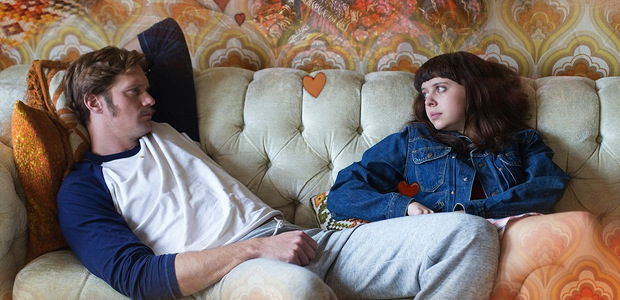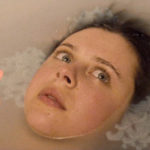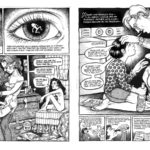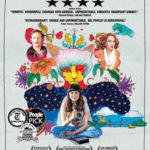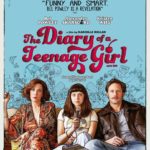I’ll tell you why I watched this movie – and not for the reasons you might think. It was because the teenage girl in question is played by Bel Powley, who played Tilly in the Royal Court production of Jumpy, a play in which I appeared on the amateur stage, albeit, thankfully for audiences, in a different role. Judging by this evidence, I expect she made a brilliant job of it.
Marielle Heller‘s film (based on Phoebe Gloeckner‘s semi-autobiographical comic strip/novel) is called Diary of a Teenage Girl. The title alone could easily confuse you into thinking it’s a romcom chick flick, a coming of age buddy movie or a hardcore porno.
In fact it’s none specifically (and pigeon-holing conveys no benefits anyway) but contains elements of all three – well, sex and a touch of dramatically appropriate nudity without any gratuitously voyeuristic hardcore component at any rate – but there’s decidedly more to it than you might judge from the prurient and suggestive name.
Having got that out the way, let’s focus on the qualities that make DOFTG stand out. OK I grant you – this is more nostalgic coming of age than anything else, but the sharper edge and lack of schmaltz makes it thoroughly watchable.
Powley, who looks younger than her years and can therefore get away with acting a 15 year old character with ease, is hugely impressive as the young girl growing up fast in 1976 San Francisco by starting an affair with her drunken mother’s louche and suggestible boyfriend Monroe, and ending with a greater awakening and an apparent pregnancy, plus resistance to her hippiesque mother’s somewhat surprising and dated insistence that Minnie and Monroe marry. Maybe that is just a hangover of 50s morality left in American culture: regardless of how you behave, you want your children to be “respectable.” Discuss!
From the audience perspective, the sexuality is handled with due sensitivity and is totally convincing, and the emotional turmoil caused to a young girl engaging on sexual relationships for the first time (not just with Monroe either – hungry sexual exploits with disappointing boys and best friend Kimmie also follow) are wholly credible and consistent with the feminist ethos of the film.
You could argue that this is turf covered by a fair number of movies, not least the delightful Juno. DOATG stands on its own virtues thanks to a performance as good as Ellen Page‘s sassy Oscar-nominated gig. Solid performances through the cast (Kristen Wiig, Alexander Skarsgård, Christopher Meloni and Madeleine Waters, take a bow) make credible what could easily have turned out to be a far more lightweight movie. Heller has given the cast a more than decent script as raw material for their developmental process.
A word too for the beautiful production visualisation (muted colours but gorgeous animations à la Juno, plus Aline Kominsky cartoons brought to life); it’s worth saying that the film stays true to the original material, but not in a contrived or artificial way – more a reflection that the character has a strong inner visual reality. Her future is as a cartoonist, in which the character displays remarkable talent (even if Powley herself did nothing more than pencil around the edges.)
What more can you ask for? Well I suspect it was written with at least half an intention to follow up with a sequel, which for a 2015 movie probably means the next tranche in a new franchise may well appear round about 2018. You do wonder what Powley’s Minnie Goetze would be like as a 32-year old with a daughter of her own in 1991, and a 48-year old gran in 2009, so maybe someday we will find out?

